The Media is Silent But the Data Speaks: How Ivermectin, Not Vaccines, Saved India's Largest State from Covid-19
Independent data scientist Chamie charts the results of some of the largest and most successful public health campaigns in history in Uttar Pradesh, population 241 million.
EDITOR’S NOTE:
We’re all living in Juan Chamie’s world now. Juan is an independent data analyst in Cambridge, Massachusetts, who does work for major corporate clients. A native Colombian, he heard about the efficacy of ivermectin in South America early in the pandemic, and began deep data dives into public health records across the globe. He created striking graphics showing covid cases and deaths dropping off the cliff in numerous regions, cities, and countries after introduction of IVM. Chamie has published his work widely and collaborated with Dr. Pierre Kory of the FLCCC Alliance, who says the data scientist is producing historic epidemiological analyses that have influenced doctors and saved lives worldwide. All Chamie’s work was taken down by Twitter. His new work, like today’s post on Uttar Pradesh, and classic work will find a new home here.
Ivermectin in the First Wave
Back in May 2020, the first covid outbreak in Uttar Pradesh started in the most touristic location: the Taj Mahal district, the district of Agra.
The Agra health team evaluated ivermectin as a covid prophylaxis and treatment. Right after the team confirmed positive results, the district included ivermectin to treat covid. The early introduction of ivermectin and the strong contact tracing strategy led to very positive results. The fast improvement drew the attention of the state authorities.
On August 5, 2020, Uttar Pradesh Chief Minister announced a shift in the covid protocol. They placed ivermectin as a treatment and for prophylaxis. The success of the “Agra model” was the primary driver to change the protocol.
The Uttar Pradesh strategy in August 2020 included over 70,000 health care workers reaching out to high-risk contacts of covid-19 positive cases and treating them. The coverage was close to 90 percent. The strategy was shared by the State Surveillance Officer and published by the World Health Organization.
The strategy in Uttar Pradesh during the first wave was successful. It was much better than the second largest state (Maharashtra). Cases and deaths in Uttar Pradesh were a fraction of Maharashtra’s. Lack of testing wasn’t the explanation, as the positivity ratio in Maharashtra remained over 20 percent from May through September 2020. Uttar Pradesh’s positivity ratio was only higher than 5 percent for less than a week.
Ivermectin in the Delta Wave
The second Covid wave burst quickly in Uttar Pradesh. It originated in a mass influx of covid-infected people from Delhi and Mumbai. The first district hit was the capital, Lucknow. Cases grew fast, reaching six times the peak values in the first wave.
The stronger covid response began on May 5, 2021. A report from the WHO confirmed the strategy: Government teams moved across 97,941 villages in seventy-five districts. The state government deployed 141,610 teams and 21,242 supervisors to ensure total rural area coverage.
During the Delta wave, Uttar Pradesh embarrassed Maharashtra. The outbreak in Uttar Pradesh had a smaller peak, and it was shorter too. The positivity ratio in Maharashtra stayed over 5 percent for four months, and Uttar Pradesh for only one month.
Possible confounding factors:
1. Vaccination
The drop in cases happened after the first 13 million vaccine doses. That’s 5 percent of the population with one dose. This ruled out vaccination.
2. Lockdown
Google public data shows a decline in mobility. The mobility decreased more in Maharashtra than in Uttar Pradesh. UP’s goal was to keep as much of the economy open as possible. This ruled out lockdown.
3. Herd immunity
Sero-survey conducted at the end of June 2021 showed antibodies in 71 percent of Uttar Pradesh population. It’s reasonable to assume that the infection rate followed the same case distribution. The sharp drop in cases began when the prevalence was near 50 percent. This ruled out herd immunity.




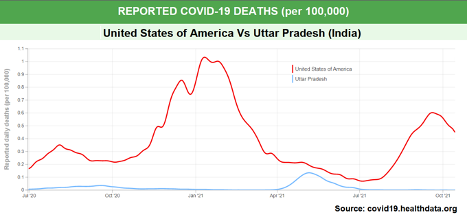
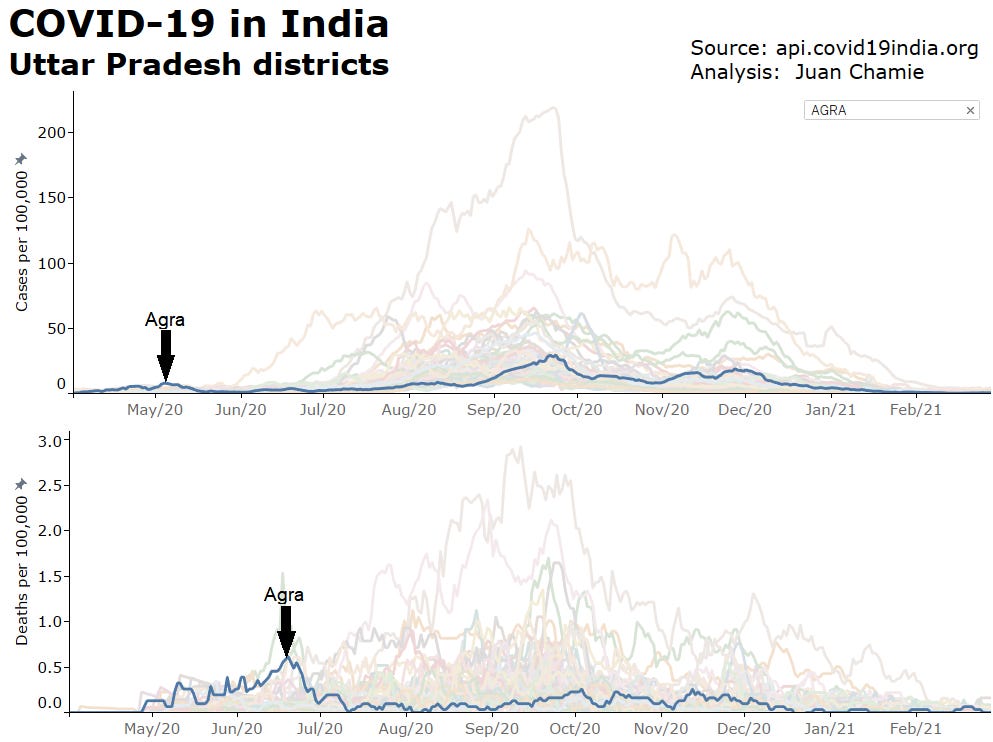


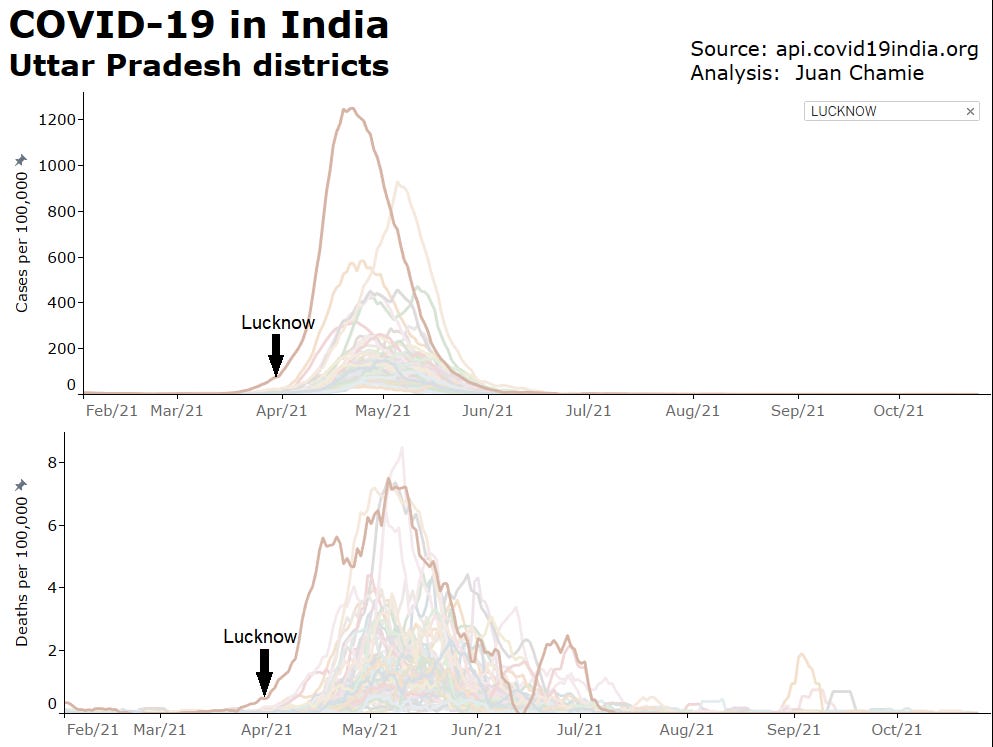
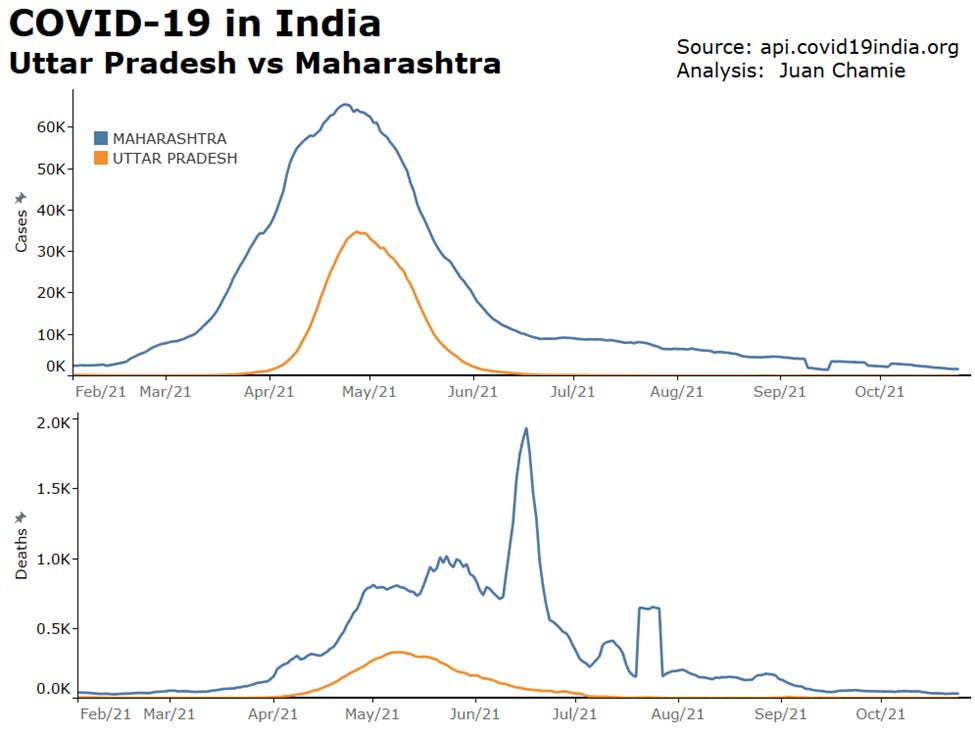


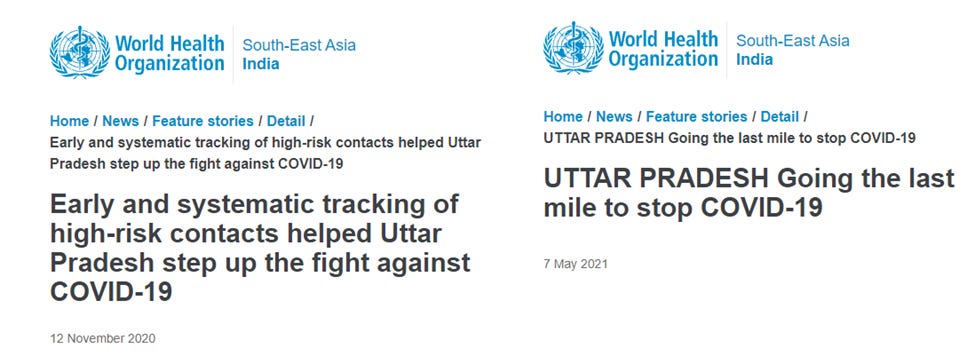

Thanks Juan for all you've done to get this life saving information out to the public. It's almost impossible to except the complete regulatory capture of mainstream media - but we've all been witness to it over the last year.
There are some real heroes in this battle against Covid. But they are not who you might think they are. They are not national or international public health leaders. They are not politicians or many major hospitals.
They are front-line doctors like Marek and Kory. They are data scientists like Juan. And independent bloggers, writers and analysts like those here on SubStack. And communities of informed people who try to support each other.